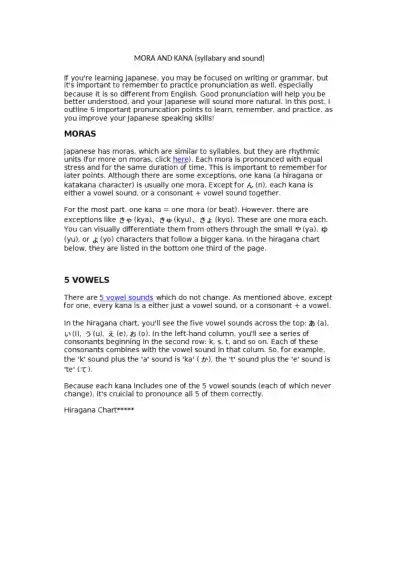Page 1

Loading page ...
Learn key pronunciation tips for Japanese! Understand moras—rhythmic units like syllables—and how kana correspond to sound. Master equal timing and natural speech with these essential basics.

Loading page ...
This document has 7 pages. Sign in to access the full document!